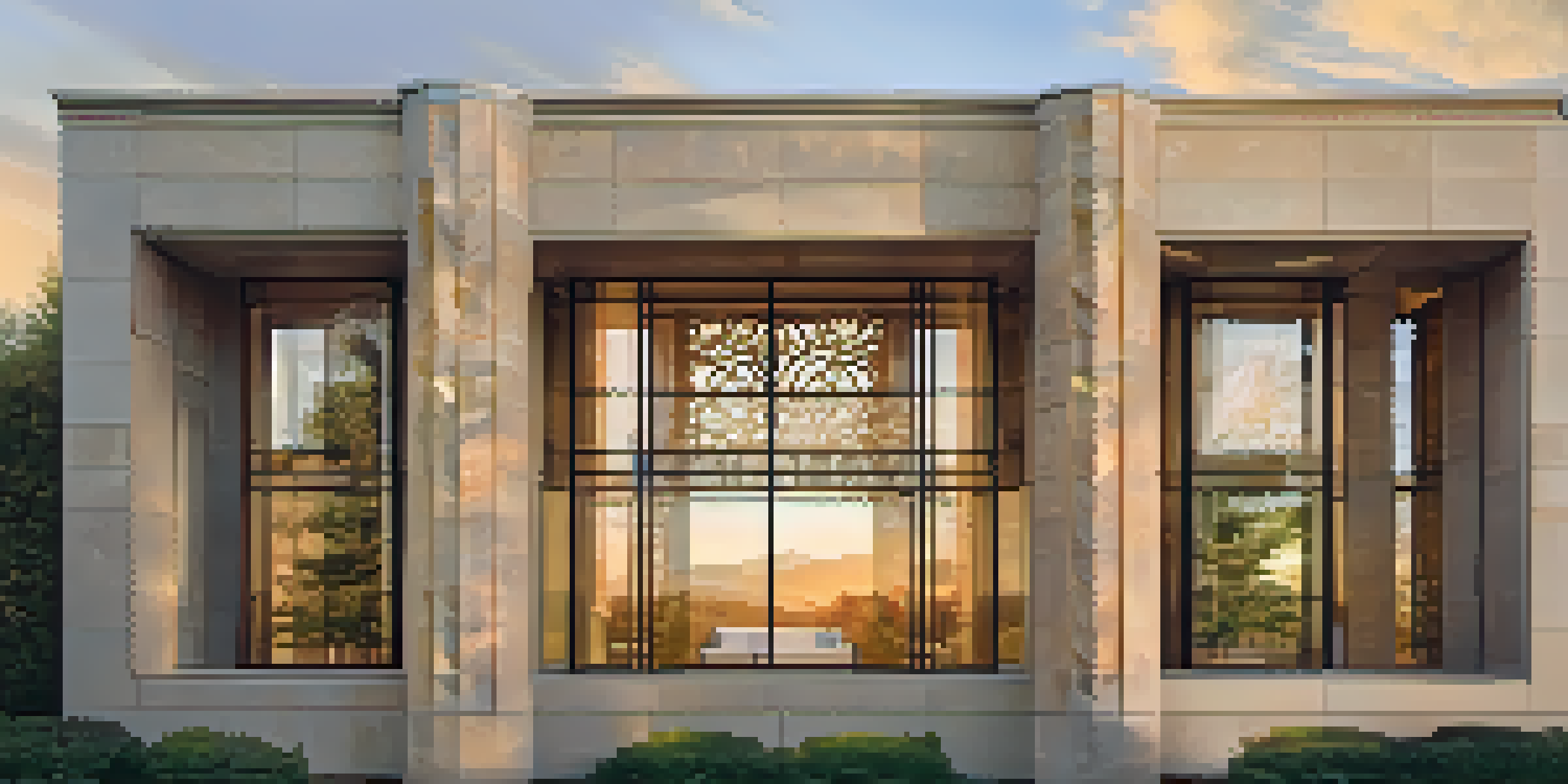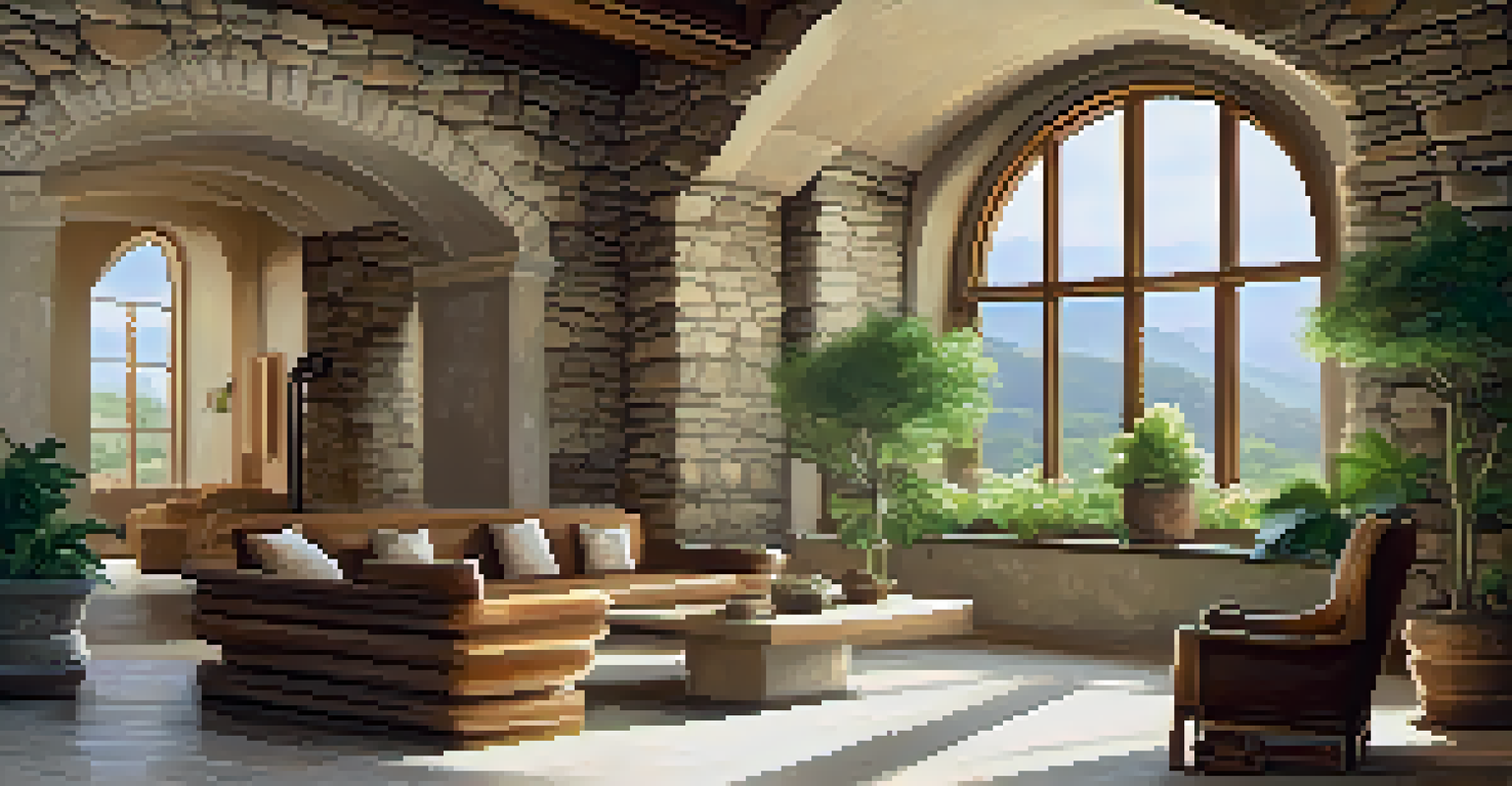Integrating Carved Stone into Sustainable Architectural Designs

Understanding Carved Stone and Its Benefits
Carved stone is a beautiful, durable material that has been used in architecture for centuries. It brings a unique aesthetic appeal that can enhance the character of any building. Beyond its visual appeal, carved stone offers practical benefits such as thermal mass and longevity, making it a sustainable choice for architects.
The stone is a symbol of permanence, a material that can endure for centuries, reflecting the beauty of nature in its raw form.
When integrated into designs, carved stone can help regulate indoor temperatures, reducing the need for artificial heating and cooling. This naturally lowers energy consumption and contributes to a building's overall sustainability. The longevity of stone means that it doesn't need frequent replacement, further reducing material waste in the long run.
Additionally, carved stone is often sourced locally, supporting regional economies and minimizing transportation emissions. When architects choose local stone, they not only reduce their carbon footprint but also celebrate the cultural heritage of the area, creating a deeper connection between the building and its surroundings.
The Aesthetic Appeal of Carved Stone
One of the standout features of carved stone is its aesthetic versatility. Whether it's the intricate designs of Gothic architecture or the clean lines of modern structures, stone can adapt to various styles. This versatility makes it an ideal choice for architects looking to create visually stunning spaces that also respect sustainability.

The tactile quality of carved stone adds depth and warmth to buildings, making them feel more inviting. It can be used in facades, flooring, or even as decorative features, each application offering a unique sensory experience. Imagine walking into a space where the walls are not just structures but also works of art, echoing the craftsmanship of skilled artisans.
Carved Stone Enhances Sustainability
Carved stone's durability and thermal mass contribute to energy efficiency and reduced ecological footprints in architectural designs.
Moreover, the natural colors and textures of stone can harmonize beautifully with other sustainable materials like wood and glass. This creates a cohesive design that feels grounded in nature, encouraging occupants to appreciate their environment while promoting a sense of well-being.
Sustainability: The Core of Architectural Design
Sustainable architecture is all about balance—creating structures that meet our needs without compromising the environment. Carved stone plays a crucial role in achieving this balance. By utilizing materials that are not only durable but also require minimal maintenance, architects can significantly reduce their ecological footprint.
Sustainability is not just about what we build but how we build, ensuring that our creations resonate with the environment and the community.
Incorporating carved stone into building designs aligns with principles of resource efficiency. The use of locally sourced stone minimizes transport emissions and supports local economies. This not only fosters sustainability but also strengthens community ties, as buildings reflect the local culture and natural resources.
Furthermore, the longevity of carved stone means that buildings can stand the test of time. Rather than relying on materials that degrade quickly, architects can design structures that endure for generations, emphasizing the importance of quality over quantity in sustainable development.
Designing for Energy Efficiency with Stone
Energy efficiency is a key consideration in sustainable architecture, and carved stone can be a game-changer. Its natural thermal mass helps to regulate temperature fluctuations within buildings, leading to reduced energy costs over time. By retaining heat in winter and keeping interiors cool in summer, stone creates comfortable living environments.
Architects can strategically place carved stone in sunlit areas to maximize its energy-saving potential. For instance, using stone in walls that receive direct sunlight can absorb heat during the day and release it gradually at night. This passive heating and cooling strategy minimizes reliance on HVAC systems, further enhancing sustainability.
Cultural Connection Through Design
Incorporating locally sourced carved stone allows architects to celebrate regional culture and history while creating meaningful structures.
Moreover, when combined with other energy-efficient technologies, such as solar panels and green roofs, carved stone can amplify a building's overall performance. This synergy not only enhances the building's efficiency but also contributes to a holistic approach to sustainable design.
The Role of Carved Stone in Water Management
Water management is a critical aspect of sustainable architecture, and carved stone can play an important role. Its natural porosity allows for effective drainage, reducing surface runoff and minimizing the risk of flooding. When integrated into landscapes, stone can help manage water more efficiently, creating resilient environments.
In urban settings, carved stone features like permeable sidewalks and rain gardens can facilitate water absorption, promoting groundwater recharge. This helps to mitigate urban heat islands and contributes to a healthier ecosystem. By incorporating stone in these ways, architects can enhance the functionality of outdoor spaces while maintaining their aesthetic appeal.
Additionally, the integration of carved stone in water features, such as fountains or ponds, can create serene environments that promote biodiversity. These features not only beautify spaces but also provide habitats for local wildlife, ultimately contributing to a balanced ecosystem.
Emphasizing Local Culture with Carved Stone
Using carved stone in architectural designs allows architects to pay homage to local culture and history. Each region offers unique stone varieties, each with its own characteristics and stories. By incorporating these materials, architects can create buildings that reflect the identity of the place they inhabit.
For instance, a building constructed with locally sourced limestone can tell the story of the region’s geological history, while also supporting local quarrying industries. This connection to the land not only enriches the architectural narrative but also fosters community pride.
The Versatility of Carved Stone
With its aesthetic adaptability, carved stone can complement various architectural styles, enriching the visual and tactile experience of spaces.
Furthermore, carvings and patterns can be inspired by local traditions and art forms, making each project a celebration of cultural heritage. This thoughtful approach not only enhances the building's beauty but also creates spaces that resonate with the community, inviting them to engage with their surroundings.
Future Trends: Carved Stone in Sustainable Architecture
As sustainability continues to shape architectural practices, carved stone is poised to play an even more significant role. Innovations in stone processing and design are making it easier for architects to incorporate this material in eco-friendly ways. From advanced cutting technologies to sustainable quarrying practices, the future looks promising for carved stone.
Moreover, the trend towards biophilic design, which emphasizes a connection to nature, aligns perfectly with the characteristics of carved stone. Architects are increasingly recognizing the emotional and psychological benefits of natural materials, leading to a resurgence in the use of stone in contemporary designs.

As we move forward, the integration of carved stone into sustainable architecture will likely become a hallmark of thoughtful, responsible design. By embracing both tradition and innovation, architects can create spaces that are not only environmentally friendly but also rich in cultural significance and beauty.